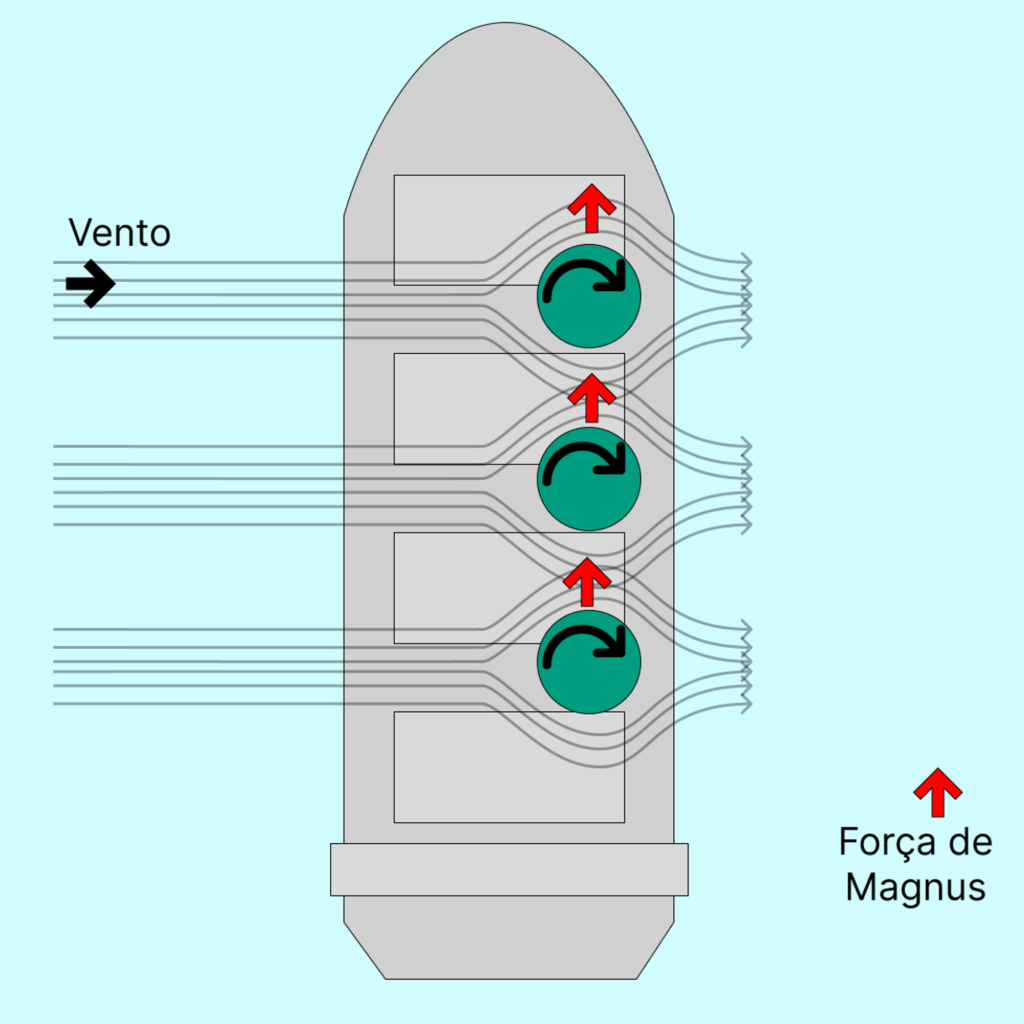In recent days, I’ve seen many people talking about Vale’s Sea Zhoushan ore carrier, with the “new” technology that will use wind to reduce its fuel consumption.
The proposal for this system, the Flettner rotor, dates back to the 1920s, with engineer Anton Flettner, who was the first to install such technology on cargo ships.
But what is the principle of this system, if it is not actually sails?
Well, these large rotating cylinders use the phenomenon known as the “Magnus effect”. And they need a robust mechanism to make the large cylinders rotate to cause this effect.
The Magnus effect is caused by the difference in air pressure in different areas of the cylinder. When the cylinder rotates and moves in a fluid, it creates areas of high and low pressure around it.
On the side where the cylinder is rotating towards the air (wind direction), it is pushed back, creating an area of high pressure.
On the opposite side, where the cylinder is rotating away from the fluid, the fluid is pulled towards the object, creating an area of low pressure (similar to a wing or foil).
The image can help you understand this better.


This effect is also used in sports such as baseball, soccer, and basketball, where athletes use it to make the ball curve in its trajectory.
However, to make the most of this phenomenon in navigation, the wind must always be perpendicular to the ship’s trajectory, in other words, abeam. In this position, the Magnus effect will always push the ship forward.
After analyzes at the time, in certain voyages this system did not prove to be as efficient as expected and there were also difficulties in the progress of projects with the Flettner rotor.


After assessments at the time, in certain voyages this system did not prove to be as efficient as expected and there were also difficulties in the progress of projects with the Flettner rotor.
This is not seen as a great solution for efficiency, due to the mechanical losses in the transmission that makes the system rotate, as well as the need for the wind direction to be favorable.
However, many studies and companies have been trying to use the Flettner rotor to increase the efficiency of their fleets.

Not only should wind conditions be studied, but also the structural part, as not just any structure can withstand a tall cylinder rotating at speed, right?
We hope that this 100-year-old solution will really bring the expected benefits to companies!

